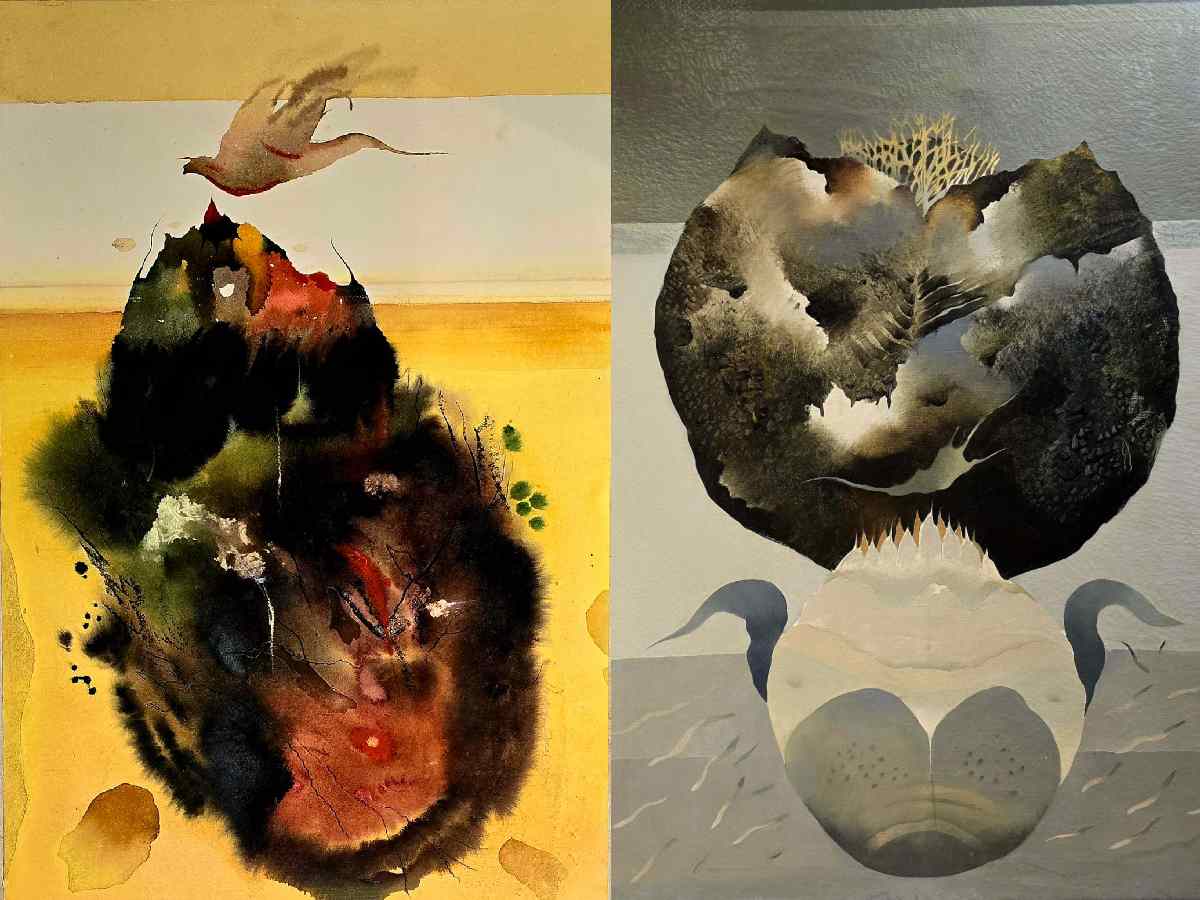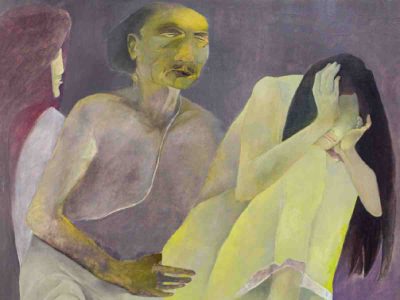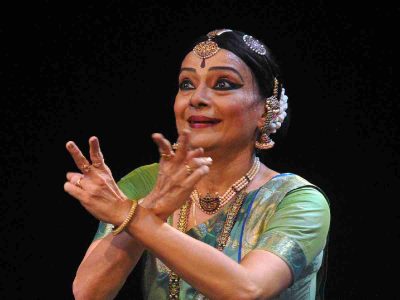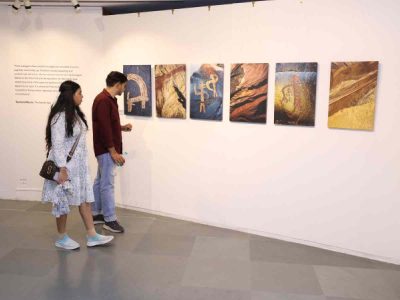In November 2024, Travancore House in New Delhi will stage a landmark celebration of one of India’s trailblazing abstractionists, Bimal Das Gupta. The retrospective, Tutelage – An Ode to a Legend, marks his first major solo exhibition in over three decades.
Presented by Dhoomimal Gallery in partnership with Gallery Silver Scapes, this showcase aims to reignite the legacy of Das Gupta, whose ground-breaking career spanned from the 1940s until his untimely death in a road accident in 1995.
Featuring more than 50 works, including rare pieces from his private collections, the exhibition seeks to reintroduce a visionary artist once central to modern Indian art but gradually lost from public memory
An Artist Ahead Of His Time
Bimal Das Gupta’s journey began in the culturally vibrant city of Kolkata, where he studied at the Government College of Art and Craft. However, his career took flight in New Delhi, where he moved early on to work as an art director for Victory, a British war magazine. It was in the national capital that he began experimenting with abstractionism—long before most Indian artists had ventured into this space.
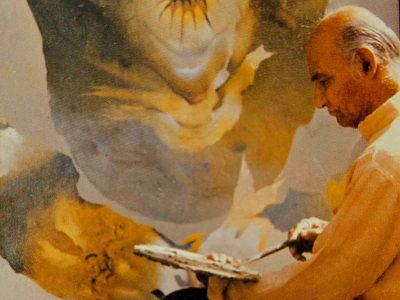
Vikram Mayor, Director of Gallery Silver Scapes, which is the principal collector of Bimal Das Gupta’s art, explains, “The relevance of abstractionism today, and the significance of artists like Das Gupta, lies in the timelessness and universality of the language of abstraction. Even though abstraction as an art form emerged in the early 20th century, artists like Das Gupta were pioneers, exploring the boundaries of this medium at a time when it was still nascent. His experimentation with techniques, mediums, and forms was not only innovative for his era but remains influential even now.”
Das Gupta, though lesser-known today, had notable patrons like former Prime Ministers IK Gujral and VP Singh. Gujral inaugurated his 1986-87 exhibition, while Singh sought his painting lessons post-premiership. Their support highlights his overlooked talent.
Mayor says: “His lack of mainstream recognition during his time could be attributed to the fact that he was not as involved in the commercial aspects of art, unlike some of his contemporaries. Despite this, his work has stood the test of time, remaining relevant and ahead of its time even after almost eight decades.”
Mayor, one of Das Gupta’s principal collectors, took nearly three decades to amass his collection, with no two pieces alike. Each one is a true masterpiece.
Uday Jain, Director of Dhoomimal Gallery, reflects on the relevance of Das Gupta’s work in today’s art scene, stating, “In my opinion, Bimal Da’s creations are timeless, much like those of Gaitonde or Rajendra Dhawan. They transcend both place and time, focusing on nature and abstraction, which gives them universal relevance. At a time when understanding the importance of nature is more critical than ever, these works serve as a powerful reminder that nature is the true master.”
Dhoomimal Gallery has enjoyed a long and cherished association with Bimal Das Gupta, one of the pioneering modernists to collaborate with them as early as the late 1930s, alongside renowned artists such as BC Sanyal and KS Kulkarni.
“Over the years, we have proudly showcased his works across the globe, consistently receiving an enthusiastic response. At the 2015 art fair, Dhoomimal Gallery dedicated a solo booth to Bimal Da’s works, further cementing his legacy. Now, in collaboration with Silver Scapes Gallery, we are excited to present a well-deserved exhibition and a forthcoming book, scheduled for November 2024. This significant event will offer art lovers, particularly the new generation, an extraordinary opportunity to view over 100 of Bimal Da’s works, spanning six decades and a variety of mediums,” Jain emphasises.
Reviving A Visionary’s Legacy
His abstract works drew heavily on natural and spiritual themes—particularly underwater worlds, the cosmos, and elements of Tantra philosophy.
“I recall numerous instances when top collectors sought him out, only for him to politely redirect them to the galleries he worked with. He firmly believed the future of Indian art lay with these galleries, cautioning that if artists sold directly, the galleries would lose their relevance,” shares Manjula Badhwar Mayor, 75, an art critic and curator.

According to Manjula, Das Gupta was a mentor to many, always supporting young talent and guiding his peers. “He often told me, ‘You are my daughter, and you will carry my legacy forward.’ This show is a tribute to his legacy, aiming to showcase the true brilliance of Bimal Da to art lovers in India and beyond,” she says.
Jain emphasises the challenge of finding a curator who truly engages with an artist’s work, stating, “We’re fortunate to have chosen Archana, who brings over three decades of experience.”
Curator Archana Khare-Ghose reflects: “Bimal Das Gupta, a celebrated painter and a generous mentor, is remembered as a genius by his peers”.
Archana laments that Das Gupta’s untimely death denied his works the recognition they deserved during India’s economic liberalisation.

